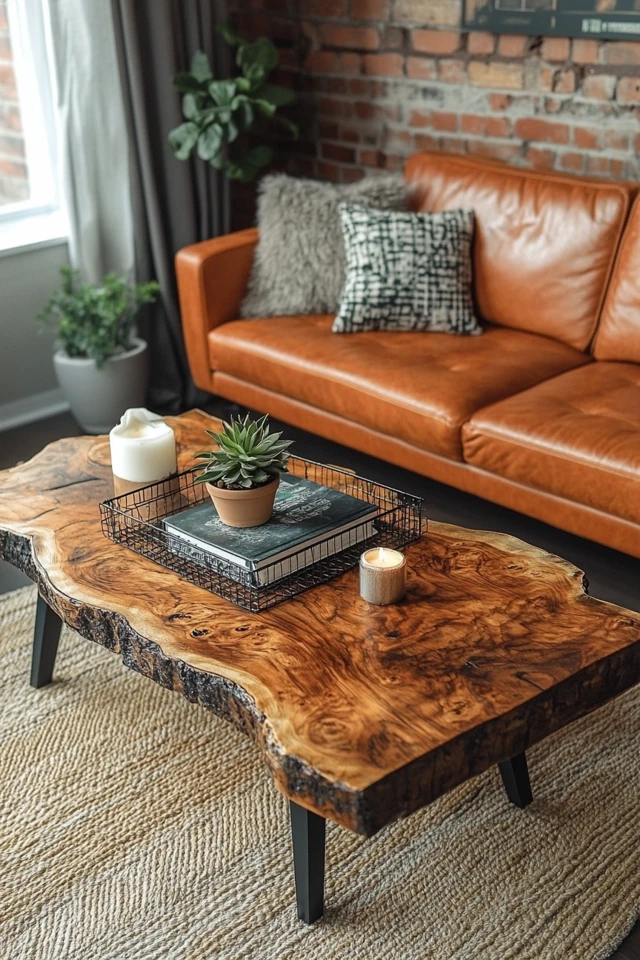The industrial aesthetic is a perfect blend of rugged charm and modern sophistication, and raw wood plays a pivotal role in bringing warmth and character to these spaces. While metal, concrete, and exposed brick dominate industrial interiors, raw wood balances these colder materials with its natural textures and tones. It’s the element that grounds the space, making it feel welcoming and lived-in without compromising the edgy, urban vibe.
In this article, we’ll explore how raw wood transforms industrial home design and the various ways you can incorporate it into your space.
1. Why Raw Wood is Essential in Industrial Design
Balancing Warmth and Coolness
Industrial interiors are often characterized by hard, cold surfaces like metal and concrete. Raw wood introduces a contrasting warmth that softens the space and makes it feel more inviting.
Natural Imperfection
The imperfections in raw wood—such as visible grain, knots, and uneven textures—add authenticity and charm, which are hallmarks of the industrial style.
Versatility
Raw wood works seamlessly across different design elements, from furniture and flooring to shelving and accent walls. It pairs beautifully with industrial materials like iron, steel, and glass.
2. Raw Wood in Industrial Furniture
Dining Tables and Coffee Tables
Raw wood dining and coffee tables are quintessential industrial pieces. The combination of a solid wood surface with black metal legs creates a timeless, functional statement.
- Reclaimed Wood: Adds character with its weathered texture and rich history.
- Live Edge Tables: Retain the natural shape of the wood for an organic, artistic touch.
- Mixed Materials: Combine raw wood tops with pipe or steel bases for an authentic industrial look.
Storage and Shelving
Raw wood shelves mounted on metal brackets or pipes bring functionality and visual interest to industrial spaces.
- Open Shelving: Ideal for kitchens, living rooms, or offices.
- Built-In Units: Pair raw wood with black steel frames for customized storage.
Pro Tip: Choose wood with visible grain patterns or imperfections for an authentic, raw look.
3. Raw Wood Flooring: The Foundation of Warmth
Raw wood floors provide a warm, tactile foundation for industrial interiors. They add depth and texture, making even the most minimalist spaces feel inviting.
Types of Raw Wood Flooring:
- Reclaimed Hardwood: A sustainable choice with character and durability.
- Wide Planks: Offer a bold, rustic aesthetic.
- Distressed Finishes: Mimic the look of aged wood for a lived-in feel.
Pro Tip: Opt for matte or natural finishes to emphasize the raw, unfinished look of the wood.
4. Accent Walls and Ceilings
Raw wood accent walls or ceilings add visual interest and warmth to industrial interiors. They can serve as a focal point or subtly enhance the room’s overall texture.
Ideas for Raw Wood Accents:
- Feature Walls: Use reclaimed wood planks behind the sofa or bed for a statement wall.
- Ceiling Beams: Add exposed wooden beams to highlight architectural details.
- Paneling: Cover a wall with raw wood slats to introduce a rustic yet polished element.
Pro Tip: Combine wood accents with exposed brick or concrete for a layered, industrial aesthetic.
5. Raw Wood in Industrial Kitchens
The kitchen is an excellent space to showcase the beauty of raw wood. Its natural warmth contrasts beautifully with stainless steel appliances and concrete countertops.
Ways to Use Raw Wood in Kitchens:
- Countertops: Opt for butcher block counters for a practical yet stylish touch.
- Open Shelves: Use wood planks with metal brackets to display dishes and cookware.
- Cabinetry: Mix raw wood lower cabinets with sleek upper cabinets for a modern industrial vibe.
Pro Tip: Seal wood surfaces to protect against moisture and stains, especially in high-use areas like kitchens.
6. Raw Wood in Industrial Lighting
Lighting is a key element in industrial design, and raw wood can elevate even the most functional fixtures.
Wooden Lighting Fixtures:
- Pendant Lights: Use wood accents on fixtures paired with Edison bulbs for a warm glow.
- Chandeliers: Choose designs that combine wood beams with black metal frames.
- Table Lamps: Look for lamps with wooden bases for a subtle, industrial touch.
Pro Tip: Use wood tones that match or complement other elements in the room for a cohesive look.
7. Raw Wood Decor and Accessories
Even small touches of raw wood can make a big impact in industrial spaces. Accessories are an easy way to introduce this material without major renovations.
Decorative Ideas:
- Wooden Trays: Use for organizing items on coffee tables or kitchen counters.
- Picture Frames: Pair wooden frames with black-and-white photography for a vintage-industrial vibe.
- Planters: Combine wood planters with greenery to add a natural, organic element.
Pro Tip: Incorporate different shades and finishes of wood to create depth and interest.
8. Sustainability and Raw Wood
Using raw or reclaimed wood in your industrial home design is not only stylish but also eco-friendly.
Benefits of Sustainable Wood:
- Reduces waste by repurposing materials.
- Creates unique, one-of-a-kind pieces.
- Contributes to a rustic, authentic look that aligns with industrial design principles.
Pro Tip: Source reclaimed wood locally or from salvage yards to minimize your environmental impact.
Picture Gallery

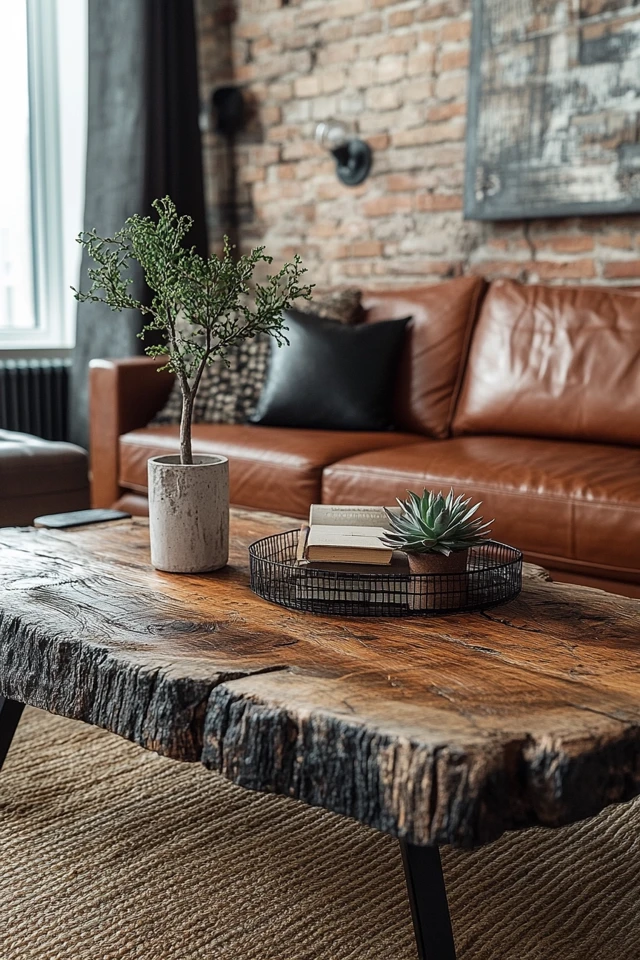
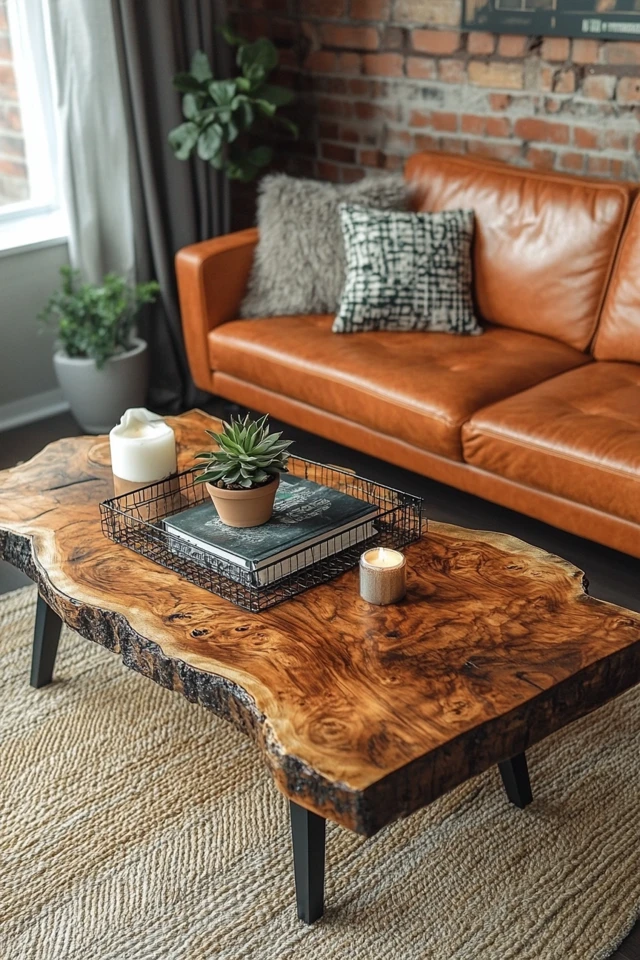
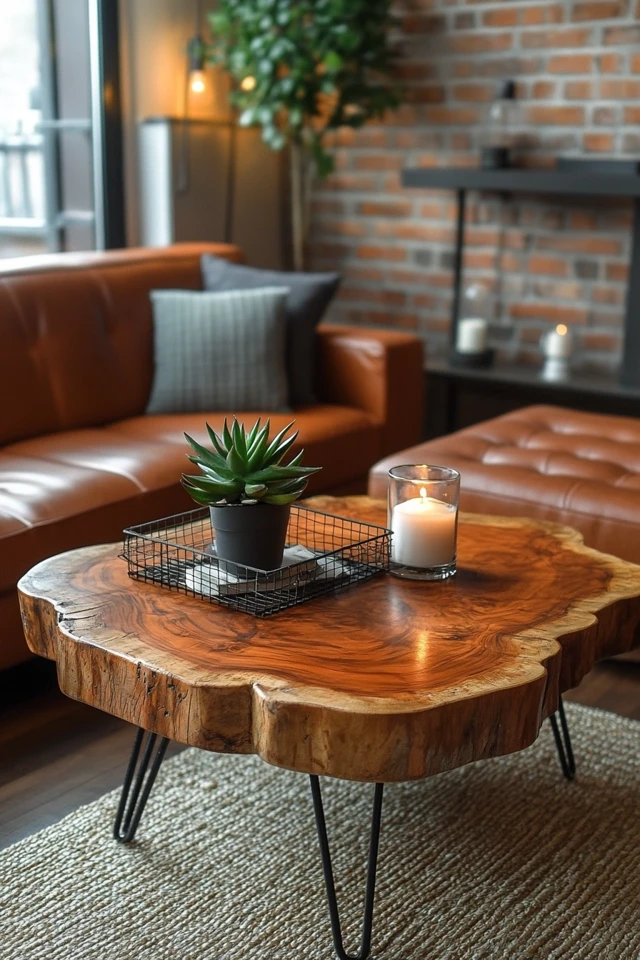
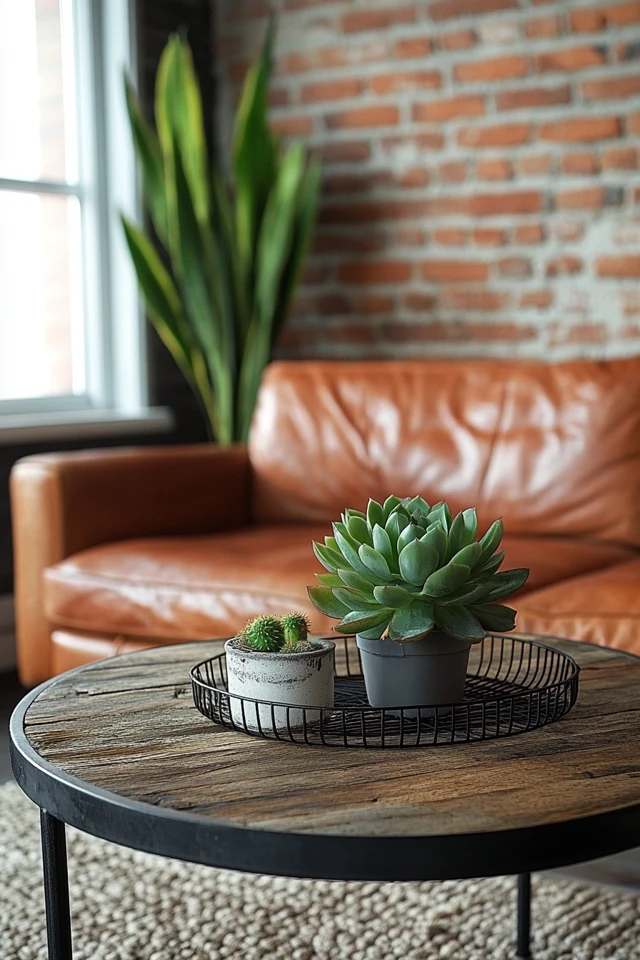

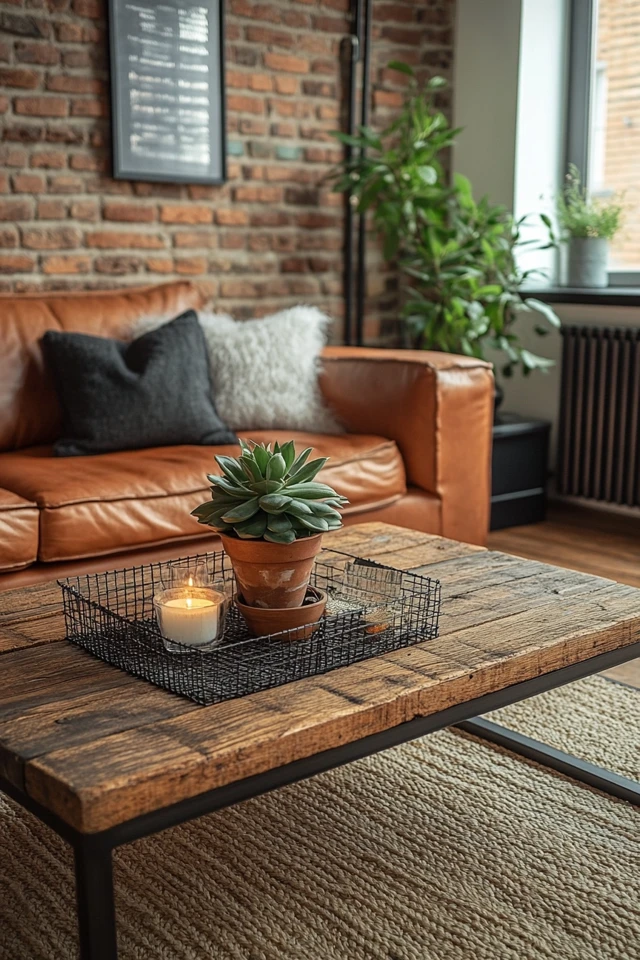
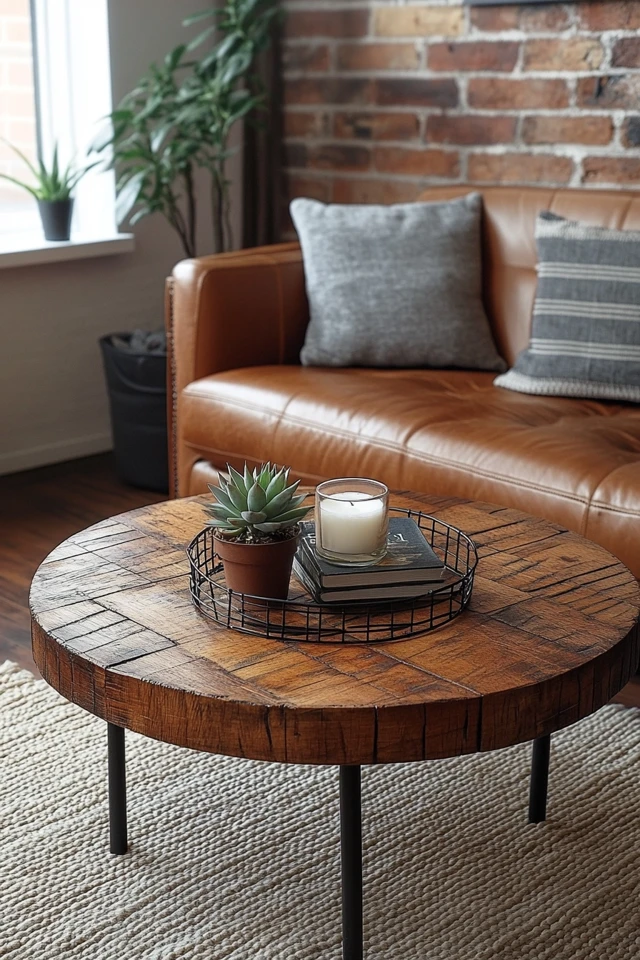

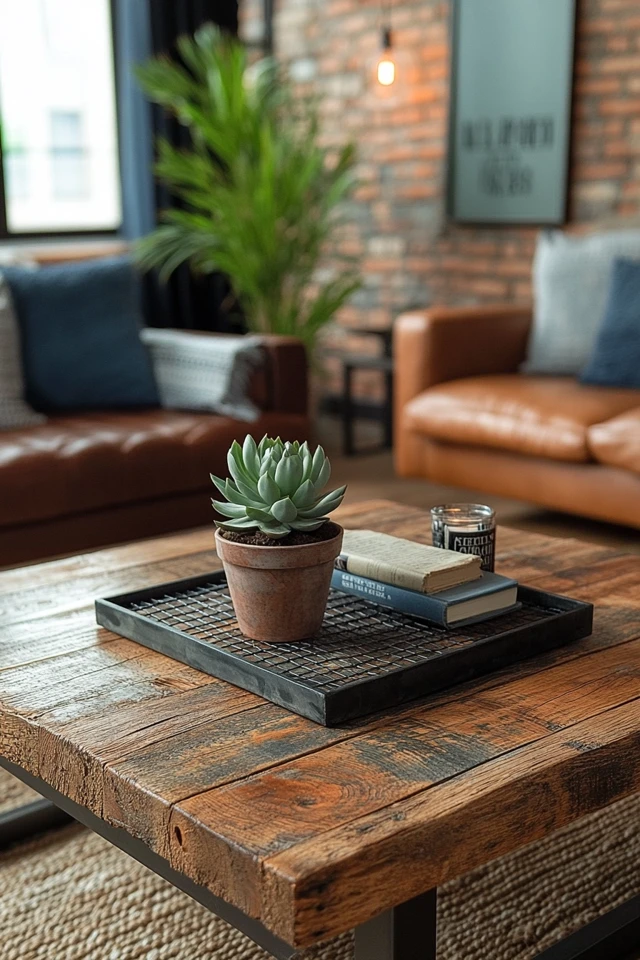
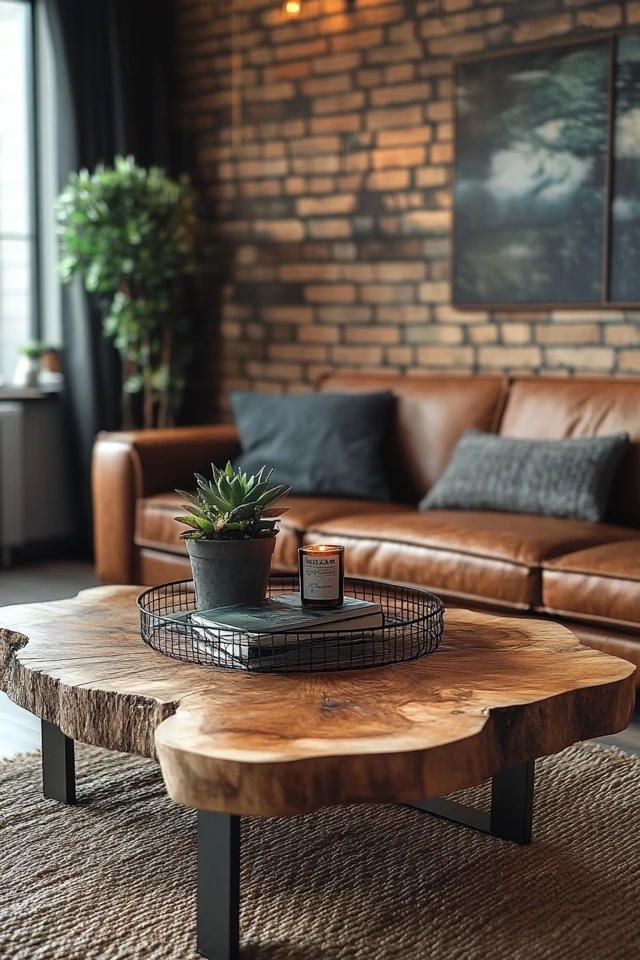
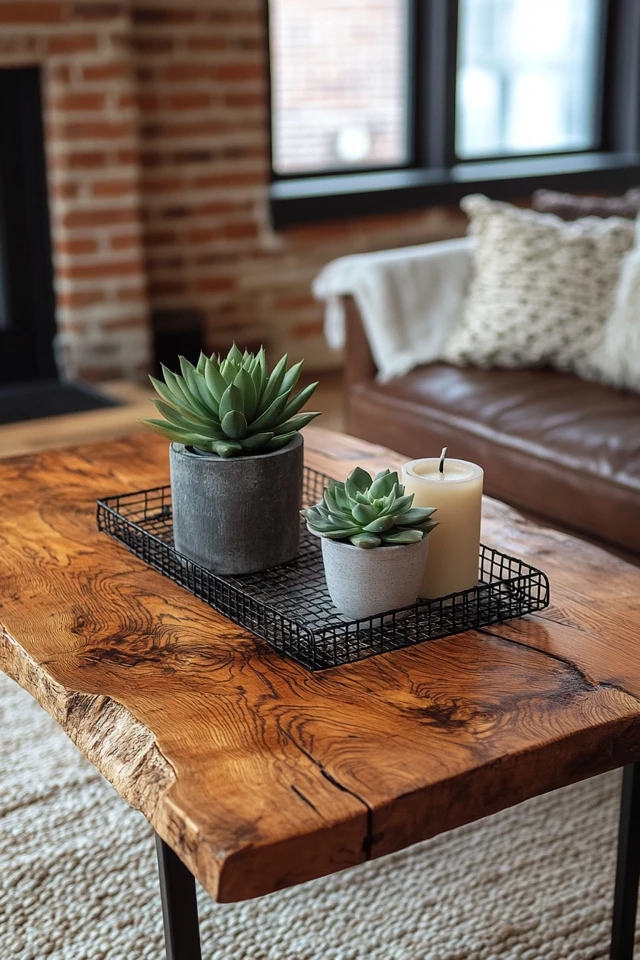
Conclusion
Raw wood is an indispensable element in industrial home design, bringing warmth, texture, and authenticity to spaces dominated by metal and concrete. Whether used in furniture, flooring, accents, or decor, raw wood balances the industrial aesthetic’s ruggedness with its organic charm.
By incorporating raw wood thoughtfully, you can create a space that feels inviting, stylish, and perfectly aligned with the urban-industrial vibe.
FAQ
1. Why is raw wood popular in industrial design?
Raw wood adds warmth and texture, balancing the cold, hard materials like metal and concrete often used in industrial design.
2. How can I maintain raw wood in my home?
Use a sealant to protect surfaces from moisture and stains. Regular dusting and cleaning with a damp cloth will keep the wood looking fresh.
3. Can I use raw wood in small spaces?
Yes! Opt for smaller wood accents like shelves, decor items, or a compact dining table to introduce raw wood without overwhelming the space.
4. What wood tones work best in industrial design?
Neutral or warm tones like oak, walnut, and reclaimed wood with visible grain and imperfections are ideal.
5. Where can I find raw or reclaimed wood for my home?
Look for reclaimed wood at salvage yards, specialty stores, or online marketplaces like Etsy or Craigslist. Many home improvement stores also offer raw wood planks.

